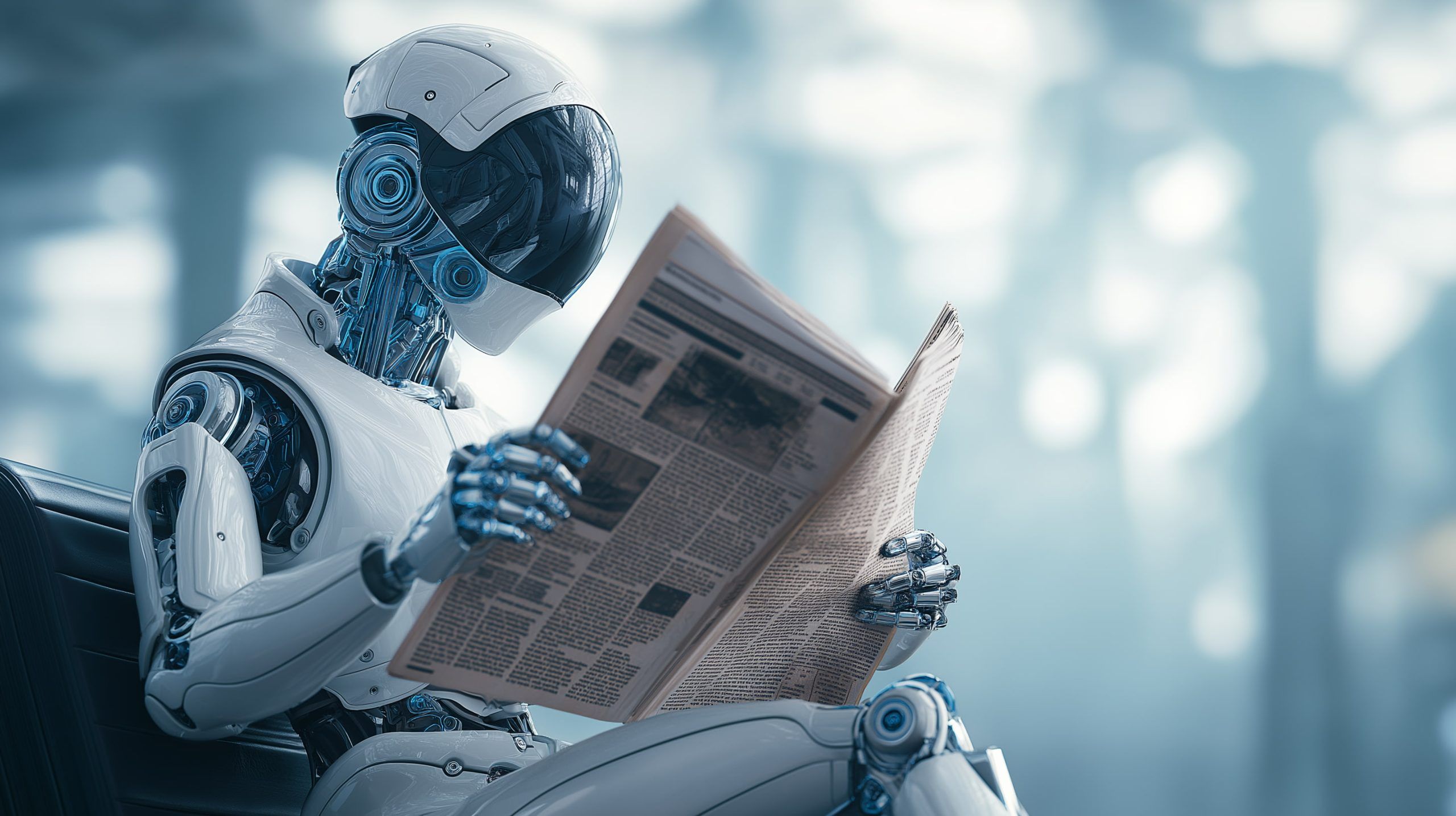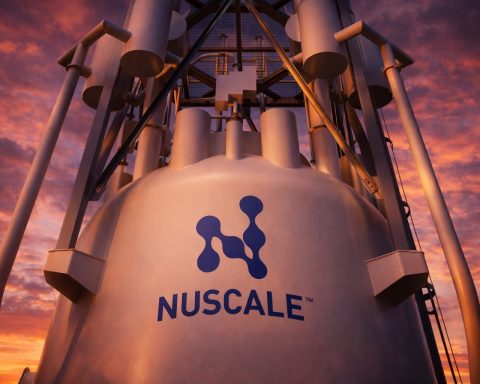- Bitcoin hits record high: The flagship cryptocurrency surges above $125,000 amid investor optimism [1].
- AI legal showdown: Elon Musk’s xAI and OpenAI trade lawsuits over talent and secrets, with OpenAI calling Musk’s claims “harassment” [2] [3].
- Tesla teases new EV: Elon Musk’s automaker hints at an Oct. 7 event for a cheaper electric car model, stoking anticipation for a “Model 2” reveal [4] [5].
- Space tech deal: Rocket maker Firefly Aerospace acquires defense firm SciTec for $855 million to bolster military space capabilities [6] [7].
- Electronics boom with AI: Apple supplier Foxconn posts record revenue on surging AI server demand, even as iPhone sales slow [8] [9].
- Chip wars intensify: China reportedly orders tech giants to halt buying Nvidia AI chips [10], while Qualcomm pivots to new Arm chip tech to outdo Apple [11] [12].
- Cyberattacks surge: Oracle warns hackers (Cl0p group) are extorting its enterprise clients [13] [14]; another gang claims 1 billion Salesforce records stolen (Salesforce denies any breach) [15] [16].
- Anthropic’s AI for defense: Startup Anthropic unveils Claude Sonnet 4.5, an AI model tuned for cybersecurity, boasting “meaningful improvements” in finding software vulnerabilities and resisting attacks [17] [18].
- Clean tech setback: The U.S. Energy Department cancels $7.5 billion in clean-energy grants, saying many projects weren’t viable [19] – a move that cut funding for hydrogen hubs, battery plants and other green initiatives [20].
- Biotech breakthroughs: New data show Novo Nordisk’s obesity drug Wegovy cutting heart-attack risk 57% more than a rival therapy [21], intensifying the $150 billion weight-loss drug race [22]. Pharma giant Eli Lilly, maker of competitor Mounjaro, announces a $1 billion investment to build drug production in India, leveraging the country’s talent and offsetting new U.S. drug import tariffs [23] [24].
- Telecom looks to 6G: At India’s Mobile Congress, officials touted the country’s lead in next-gen networks. “The world is now looking beyond 5G towards 6G, and India is already leading the way,” said Telecom Minister Jyotiraditya Scindia [25], as the event highlighted 6G, AI, satellite comms and startup innovation.
- Robotics on the rise: China hosted the first World Humanoid Robot Games in Beijing, with over 500 robots from 16+ countries competing in sprint races, soccer matches and even robot kung-fu [26]. Mostly remote-controlled for now, these humanoids drew cheers (and laughs at tumbles) from thousands of spectators, underscoring how fast robotics is advancing – and how keen China is to showcase its lead in the field.
Artificial Intelligence (AI)
OpenAI vs. Musk’s xAI – legal battle heats up: The Silicon Valley rivalry between Elon Musk and OpenAI turned into open warfare in court. Musk’s AI startup xAI sued OpenAI, accusing it of poaching staff to steal trade secrets related to xAI’s Grok chatbot. This week OpenAI hit back, asking a judge to dismiss the suit and blasting it as part of Musk’s “ongoing harassment” of the company [27]. OpenAI’s filing argued that “talented xAI employees are leaving in droves” under Musk and have every right to join OpenAI [28]. Musk, a co-founder turned critic of OpenAI, claims xAI’s tech is more advanced than ChatGPT and that OpenAI conspired with Apple to suppress rivals – allegations both Apple and OpenAI deny [29]. “The truth is that xAI is hemorrhaging talent to other competitors, including OpenAI,” the filing stated bluntly [30]. The feud has become a high-profile drama amid the red-hot AI talent race, with dueling lawsuits (Musk also sued over OpenAI’s for-profit switch, and OpenAI countersued for harassment [31]) reflecting the skyrocketing stakes in generative AI. As one industry commentator put it, this is “CEO-speak for ‘We’re pawns in a digital Cold War’” [32] – the AI war is as much personal as technological.
Anthropic’s new cyber-defender AI: Amid the AI frenzy, startup Anthropic (founded by ex-OpenAI researchers) announced an upgrade to its Claude AI model aimed squarely at cybersecurity. Dubbed Claude Sonnet 4.5, the model is being touted as “one of the most advanced…for safety and security” [33]. Anthropic says it invested extra training to make Claude better at resisting misuse – “substantially improv[ing] the model’s behavior, reducing concerning behaviors like sycophancy, deception, power-seeking, and…delusional thinking,” the company wrote [34]. Importantly, Sonnet 4.5 shows “meaningful improvements in vulnerability discovery, code analysis, software engineering and biological risk assessments,” Anthropic reported [35]. In tests, it was much harder to prompt into bad behavior (like giving disinformation or illicit advice) compared to earlier models [36]. It also better defends against prompt injection attacks that try to trick the AI into ignoring its safety guardrails [37] [38]. While no AI is foolproof – Anthropic admits Sonnet is “well below” dangerous capability thresholds [39] – the model aims to be a “helpful, honest and harmless” AI assistant with beefed-up security. Analysts say this reflects a broader trend: as AI systems are deployed in sensitive areas like coding and national security, companies are racing to prove their models can be trusted. Anthropic’s focus on defensive cyber skills is timely – just this week, news broke of monthly data breaches hitting South Korean organizations, a sobering reminder that software vulnerabilities can have real-world consequences [40]. If AI like Claude 4.5 can help sniff out bugs or patch holes, it could become a valuable tool for cyber defenders – and a selling point in an AI market increasingly concerned with safety.
AI chips and the U.S.–China rift: On the geopolitical front, AI hardware is deepening the tech rift between superpowers. According to the Financial Times, China’s internet regulator quietly ordered domestic tech titans – including ByteDance (TikTok’s parent) and Alibaba – to stop buying Nvidia’s advanced AI chips and even cancel existing orders [41]. The directive, reported in mid-September, specifically targeted Nvidia’s new flagship silicon tailored for China. It’s a retaliatory move: the U.S. has been tightening export bans on cutting-edge chips to China, and now Beijing is effectively saying, “fine, we won’t buy your chips at all.” Nvidia, the world’s AI chip leader, finds itself caught in the middle. CEO Jensen Huang lamented that Washington and Beijing “have larger agendas to work out” and expressed disappointment, even as he acknowledged Nvidia is a pawn in a “digital Cold War” between nations [42] [43]. News of China’s ban knocked Nvidia’s stock down ~3% [44], though analysts note Chinese firms still want Nvidia chips to train AI – they’re just now constrained by both U.S. rules and Chinese policy. This saga underscores how AI dominance is not just about algorithms, but silicon. In a related development, Qualcomm – a major U.S. chip designer – revealed it has pivoted to Arm’s latest architecture (v9) for its new Snapdragon processors to keep pace in the AI era [45]. Qualcomm had been in a bitter legal dispute with Arm, but is now embracing Arm’s cutting-edge tech (with features to accelerate AI tasks) to compete better with Apple’s and MediaTek’s chips [46] [47]. One analyst called the move “remarkable” given the courtroom clashes: “Less than a year ago, Arm had threatened to cancel [Qualcomm’s] license…Now Qualcomm could have gone a very different path here” [48], but instead it doubled down on Arm’s IP. The upshot: expect faster, AI-optimized chips in next-gen smartphones and PCs – and watch the U.S.–China chip tug-of-war continue, with AI computing power squarely at its center.
Consumer Electronics & Semiconductors
Foxconn’s record revenues, thanks to AI: The world’s largest electronics manufacturer, Foxconn, reported blowout sales – but with an interesting twist. The Taiwanese giant (also known as Hon Hai Precision) said its third-quarter revenue hit a record T$2.06 trillion (~$67.7 billion), up 11% year-on-year [49]. The surge was driven not by smartphones, but by soaring demand for AI hardware. Foxconn is a key supplier for Nvidia’s cloud servers and other data-center gear, and it saw “strong AI demand” fueling robust growth in its cloud and networking division [50] [51]. By contrast, its smart consumer electronics segment (which includes Apple’s iPhones) dipped slightly – partly due to a stronger Taiwanese dollar hurting the translated sales [52] [53]. September alone was a record month, up 14% from last year [54]. Foxconn expects the momentum to continue into Q4 as AI server shipments ramp up and the holiday season boosts gadget orders [55]. However, the company sounded a note of caution about “the global political and economic situation and exchange rate fluctuations” [56] – a subtle nod to how U.S.–China tensions and economic headwinds could pose risks. Still, Foxconn’s upbeat results underscore a broader industry trend: even as smartphone sales plateau, AI is the new gold rush in tech manufacturing. When one of Apple’s top assemblers is now also “Nvidia’s biggest server maker” [57], it’s clear how the center of gravity is shifting to AI infrastructure.
Global chip supply chain shifts: That shift is also prompting strategic moves. In a notable announcement on Oct 6, U.S. pharma and tech conglomerate Eli Lilly (oddly enough) highlighted an intersection of tech and policy that could affect electronics supply. Lilly isn’t a chipmaker, but it revealed it will invest $1+ billion in India to expand manufacturing – citing India’s skilled workforce and crucially, the need to diversify because the Trump administration imposed a 100% tariff on imported branded drugs effective Oct 1 [58]. By analogy, similar protectionist trade policies in tech (like tariffs or export bans on chips) are encouraging companies to localize production. We’re seeing a “China+1” strategy in electronics too: manufacturers are expanding in India, Vietnam, and elsewhere to hedge against U.S.–China trade friction. For instance, Apple has been rapidly scaling iPhone production in India. Meanwhile, Qualcomm’s adoption of Arm v9 (as mentioned above) also has supply-chain undertones – it locks in a partnership with UK-based Arm at a time when open-source RISC-V chips (with a lot of China backing) are emerging as an alternative [59]. Qualcomm’s decision reassures Arm (and its new shareholders) that major clients will keep using its designs, potentially boosting Arm’s royalties [60]. In short, the semiconductor and electronics sectors are being reshaped by AI demand on one hand and geopolitics on the other – leading to record sales for some, tough choices for others, and a reordering of where the world’s gadgets and chips get made.
Cybersecurity
Hackers extort Oracle customers: A new ransomware extortion campaign is targeting businesses via an Oracle software platform, in a stark reminder of rising cyber threats. Enterprise tech giant Oracle confirmed that some customers of its popular E-Business Suite received threatening emails demanding money [61] [62]. Google’s cybersecurity team first sounded the alarm mid-week, and Oracle’s own investigation found hackers likely exploited known vulnerabilities in unpatched Oracle software [63]. Oracle urged clients to install updates immediately. The hacking group in question – identified by Google as the notorious Cl0p ransomware gang – has been linked to a slew of high-profile attacks. Cl0p told Reuters that Oracle had “bugged up” (i.e. messed up) but declined to share details [64]. Experts say Cl0p is a Russian-speaking syndicate offering “ransomware-as-a-service,” effectively hacking for hire [65]. According to cybersecurity firm Halcyon, ransom demands in this campaign ranged from a few million dollars up to a staggering $50 million in one case [66]. The brazen tactic here is data extortion – hackers steal sensitive data and then threaten to leak it unless paid. It’s a double-whammy: even companies with good backups (to recover from encryption) feel pressured to pay to avoid leaks. This Oracle-related attack shows that even well-known enterprise systems can be weak links if not promptly patched. It’s also an escalation in how ransomware crews are targeting tech vendors’ clients en masse.
“Salesforce breach” claims – true or bluff? In a separate incident, a hacker group is bragging about stealing nearly 1 billion records tied to Salesforce, the leading cloud CRM provider [67]. The group, calling itself “Scattered LAPSUS$ Hunters,” told Reuters they exfiltrated troves of data by compromising companies that use Salesforce’s software [68]. Notably, they also took credit for hacks on UK retail giants Marks & Spencer, the Co-op and even automaker Jaguar Land Rover earlier this year [69]. It appears the attackers didn’t breach Salesforce’s own servers, but rather hit Salesforce’s clients – essentially infiltrating through third parties. Salesforce responded firmly that its platform was not hacked and that there’s “no indication the Salesforce platform has been compromised, nor…any known vulnerability” involved [70]. In other words, if data was stolen, it likely came from misconfigured customer systems or user credentials stolen elsewhere. One hacker in the group admitted by email that they “did not directly hack Salesforce” but targeted its customers [71]. This saga echoes the recent trend of supply-chain attacks and “island-hopping,” where breaching one organization (like a smaller partner or client) opens the door to another. The near-billion figure is eye-popping – if true, it would be one of the largest data heists ever. But with no independent verification yet, observers are cautious. Security analysts note LAPSUS$ and its offshoots are known for bold claims (the original LAPSUS$ gang hit Microsoft, Nvidia and others in 2022). Whether exaggerated or not, the episode is another wake-up call: even cloud data must be carefully protected by every link in the chain. Companies using big SaaS platforms need to implement strong access controls, and the providers themselves often offer tools to detect unusual data exfiltration – tools that savvy clients should use.
Telecommunications
March toward 6G & satellite networks: While 5G wireless is still rolling out worldwide, the industry already has eyes on 6G – and jockeying for leadership has begun. At the India Mobile Congress 2025 in New Delhi (one of Asia’s largest telecom events), India’s government made a bold pitch that the country will help lead the 6G era. “The world is now looking beyond 5G towards 6G, and India is already leading the way,” declared Communications Minister Jyotiraditya Scindia [72]. India has reason to boast: it has established a Bharat 6G Alliance and invested in advanced telecom research. The IMC conference showcased prototypes for 6G applications, ranging from AI-driven network automation to next-gen satellite communication (“satcom”) services. Scindia noted that India already granted licenses to three firms for satellite broadband and that satcom will be a major focus at the event [73]. In fact, telecoms see satellite networks (low-Earth orbit constellations, etc.) as complementary to terrestrial 5G/6G, enabling global coverage for IoT devices and remote areas. European carriers are similarly anxious not to fall behind in 6G – a group of 12 EU mobile operators recently urged regulators to open up new spectrum for 6G in the 6 GHz band, warning that otherwise “Europe’s competitiveness would be threatened” vis-à-vis the U.S. [74] [75]. The U.S. and China are also pushing aggressive 6G R&D timelines (commercial rollout is expected ~2030s). In the nearer term, telecom companies are busy improving 5G and launching satellites. Just this week, Verizon hinted it might partner alone to develop 6G standards, and Apple confirmed it’s using satellite text SOS features via Globalstar. The takeaway: telecom is a long game, and the groundwork for 6G – new spectrum, new alliances (even cross-industry ones with space companies) – is being laid now. Consumers, meanwhile, are still trying to figure out what to do with 5G’s speeds; but rest assured, even faster and more ubiquitous networks are coming, for better or worse.
Union wins for gig workers – tech platforms adapt: In a policy development adjacent to telecom and tech, California passed a landmark law on Oct 4 allowing Uber and Lyft drivers to unionize as independent contractors [76]. This doesn’t directly involve network technology, but it’s big news for ride-hailing platforms and the broader app-based gig economy. For years, companies like Uber have fought to keep drivers classified as non-employees (to avoid collective bargaining and certain benefits). The new law creates a path for drivers to organize without being employees, a first-of-its-kind compromise. Why does this matter in a tech roundup? Because it signals a shift in how tech platform labor is regulated. App developers and platform operators will likely need to adjust features and policies – for example, they might build in systems to interface with driver unions or accommodate new benefits. It could also spur similar moves in other states or countries. Tech industry watchers say this reflects a maturation of the gig economy: early disruption gave way to entrenched services, and now society is pushing for a new equilibrium on worker rights. For the millions of users of these apps, changes may be subtle (slightly higher prices or improved service as conditions stabilize). But make no mistake, this is historic for tech labor – it shows that even in an AI and automation-filled future, human workers powering tech platforms will still demand (and win) a voice.
Robotics
Rise of the robot Olympics: A scene straight out of science fiction played out in Beijing recently: humanoid robots sprinting on a track, shooting hoops, playing soccer, and even performing kung-fu. It was the inaugural World Humanoid Robot Games, dubbed a “Robot Olympics,” which took place in late August 2025. This week, videos and analysis of the event continued to circulate, sparking fascination and debate about the state of robotics. According to Chinese media, the games drew 280 teams and over 500 humanoid robots from 16 countries [77]. Held in the same arena used for the 2022 Winter Olympics, the competition featured events like 100m and 1500m dashes (won by China’s Unitree robots), obstacle courses, and robot soccer with teams of bipedal bots. The opening ceremony even had dancing humanoids and a robot rock band, to the delight of 12,000 spectators in the stadium [78] [79]. While many robots still relied on remote operators for complex actions (full AI autonomy isn’t quite there yet), the spectacle demonstrated dramatic progress – Unitree’s flagship humanoid H1 clocked a 1500m time of 6m34s and a 400m in 1m28s [80] [81], still slower than humans but a leap from last year’s records. The event wasn’t just fun and games; it was a geopolitical showcase, with China signaling its ambition to lead in humanoid robotics. Engineers from Beijing to Boston noted that these competitions drive innovation by stress-testing robots in real-world scenarios. There were also reminders of challenges: one heavy robot accidentally bowled over a human cameraman (no serious injury) [82], underscoring safety concerns as robots and people start to mix. And most robots struggled with tasks that humans find simple – a reality check on the hype. Nonetheless, between this “Robot Olympics” and numerous robotics conferences (IEEE Humanoids 2025 was held in Seoul last week, and CES 2025 featured several home robot prototypes), it’s clear that robotics is entering a golden age. We may not have C-3PO at home yet, but armed with better motors, sensors, and AI brains, the robots are steadily coming – to our factories, streets, and maybe one day, living rooms.
Biotechnology & Health Tech
Weight-loss drug race and a $150B market: Few technologies have as direct an impact on human life as those coming out of biotech labs – and right now, weight-loss medications are the breakout stars of the industry. The class of drugs known as GLP-1 agonists (like Novo Nordisk’s Wegovy and Eli Lilly’s Mounjaro) are already being hailed as potential game-changers for obesity. This weekend brought fresh evidence of their benefits – and the fierce competition between pharma giants. Novo Nordisk revealed new real-world study data showing Wegovy cut the risk of heart attack, stroke or death by 57% compared to Lilly’s GLP-1 drug in overweight patients with heart disease [83]. Although the comparison wasn’t a randomized trial, it suggests Wegovy’s cardiovascular benefits might be unmatched in its class, bolstering Novo’s hand as it battles Lilly for market share [84]. Analysts expect the weight-loss drug market to balloon to $150 billion annually by early 2030s [85] – a virtually unprecedented expansion, fueled by astonishing patient demand. (For context, these injectables help many patients lose 15-20% of body weight, something no prior obesity drug achieved.) Novo’s sales have skyrocketed so fast that Denmark (where it’s based) had to revise its economic forecasts based on one company’s success [86]! Lilly is hot on Novo’s heels: its drug Zepbound (tirzepatide’s brand name for obesity) just got U.S. approval, and Lilly is rushing to scale up production. In fact, Lilly announced it will spend over $1 billion in India to manufacture more of its drugs (including Mounjaro for diabetes/obesity) by partnering with local firms [87] [88]. “We are making significant investments to increase manufacturing…around the world,” said Lilly’s international president, noting India is a key talent hub [89]. Notably, Lilly’s move comes as the U.S. instituted steep tariffs on imported drugs effective Oct 1, pressuring pharma to localize supply chains [90]. So these weight-loss injections are not only reshaping medical treatment, they’re causing ripple effects in global trade and industrial strategy.
Other medical tech updates: There’s plenty more happening in health tech. The U.S. FDA is reviewing a high-dose oral pill version of Wegovy (semaglutide) for approval soon, which could provide a needle-free option for patients [91]. In gene therapy, a breakthrough for Rett syndrome (a rare genetic neurological disorder) earned Breakthrough Therapy designation, speeding its path to market [92]. And in the realm of public health, researchers are leveraging tech in new ways – from AI models predicting Alzheimer’s onset to CRISPR gene-editing trials showing promise for sickle-cell disease. Meanwhile, global health authorities continue grappling with safety issues: the FDA just tightened rules after finding radioactive contamination in some food imports (yes, you read that right) [93], and India is cracking down on rogue cough syrup makers after tragic incidents [94]. These remind us that technology’s impact on health can cut both ways – delivering amazing new cures, but also requiring vigilance to ensure safety and quality. On a hopeful note, scientists are exploring next-gen weight-loss drugs beyond GLP-1 (like peptide “twincretins” and oral small molecules) [95], as well as advancing cancer therapies (AstraZeneca just unveiled data for a drug that significantly extends survival in advanced breast cancer [96]). In sum, the biotech sector is buzzing: from labs to clinics to policy halls, innovation in medicine is accelerating at a pace perhaps not seen since the dawn of the antibiotic era – with huge implications for patients, investors, and society’s approach to health.
Clean Energy & Climate Tech
Energy project cuts and climate politics: In a controversial move, the U.S. Department of Energy (DOE) rescinded $7.56 billion in funding for 223 clean energy projects nationwide [97]. Announced on Oct 5, the cancellation swept dozens of planned initiatives off the table – including hydrogen fuel hubs in California and the Pacific Northwest, battery manufacturing plants, grid modernization projects, and electric vehicle infrastructure builds [98]. DOE said that after review, these projects “did not adequately advance the nation’s energy needs, were not economically viable, and would not provide a positive return on investment of taxpayer dollars.” [99]. Critics, however, argue the decision is politically motivated, aligning with President Donald Trump’s pro-fossil-fuel stance. (Indeed, just a day later Trump gave a speech praising “beautiful clean coal” and deriding renewables, drawing concern that the U.S. is ceding ground in the clean tech race [100].) Environmental groups like NRDC blasted the DOE’s move, noting it axed funding for exactly the kinds of projects needed to transition off oil and gas – from green hydrogen to advanced battery storage [101]. California’s governor said his state alone lost $1.2 billion for a major hydrogen hub it was planning [102]. The cuts highlight how policy whiplash can affect tech sectors: many of these projects were initiated under the prior administration’s climate bill incentives, and companies had geared up for them. Now, some firms may pivot to seek private capital or foreign partnerships (Europe and the Middle East are actively funding hydrogen and carbon capture ventures). The uncertainty could chill investment in U.S. clean tech in the short term. However, states like California and New York signaled they will push forward with clean energy goals regardless – potentially funding some initiatives themselves or with allies. The larger backdrop is the upcoming COP30 climate summit and a global imperative to triple renewable energy capacity by 2030. The U.S. federal pullback may slow progress, but market forces (the falling cost of solar, the EV boom, etc.) and subnational actions are still driving a clean energy shift.
EVs and clean transport: On the transportation side of clean tech, Tesla’s tease of a new affordable EV stole headlines. Late on Sunday, Tesla posted cryptic videos on X (Twitter) showing a shadowy car front with headlights and flashing “10/7” – implying an October 7 unveiling [103]. Speculation is rampant that Tesla will finally reveal its long-awaited “Model 2” or a low-cost version of the Model Y. Musk has hinted for years at a ~$25,000 EV to open up a much bigger market segment. The timing makes sense: a U.S. federal EV tax credit of $7,500 just expired on Sept 30 for many Tesla buyers, which caused a Q3 delivery surge to a record for Tesla [104] but could soften demand now. A cheaper model would help Tesla sustain growth as competition from BYD, Hyundai, and others intensifies. Inside sources say Tesla already built prototype “first builds” of a lower-cost Model Y with simplified design (20% cheaper to make) and plans to scale production in 2026 [105]. If Tuesday’s event confirms this, it could be a game-changer for EV adoption. Affordable electric cars are key to hitting climate goals, and Tesla moving down-market will pressure other automakers to follow. Meanwhile, Europe is grappling with a flood of inexpensive Chinese EVs, prompting an EU investigation into subsidies. And in the U.S., traditional automakers are in tense union talks partly due to the EV transition – workers want a fair share of the EV future. Amid these currents, Tesla remains the EV trend-setter, and whatever it announces on Oct 7 will be closely watched by the auto and energy industries alike. Will it be a truly mass-market EV, a revamped next-gen Roadster, or something completely unexpected? We’ll know soon, but the mere prospect has the tech world buzzing.
Global clean tech highlights: Despite some setbacks, clean tech progress continues globally. The UAE touted its investment in solar and hydrogen as it prepares to host the COP climate summit later this year [106]. Europe’s largest wind power conference concluded with calls for faster permitting and supply chain support, as offshore wind targets risk delay. And one feel-good story: ATRenew, a Chinese electronics recycling firm, was named a finalist for Prince William’s Earthshot Prize for its platform that refurbishes and recirculates used gadgets [107] – tackling e-waste and promoting a circular economy. With climate challenges mounting (this summer saw record heat and wildfires), innovators around the world are racing to deploy technology as part of the solution. From carbon capture startups to nuclear fusion research labs, the pursuit of sustainable tech breakthroughs is in high gear. Even as politics sometimes intervenes, the momentum behind clean technology and renewable energy feels irreversible – driven by both the urgency of climate change and the economic opportunity of building the next generation of infrastructure.
Software & Tech Business
Microsoft’s new AI agent toolkit: In pure software news, Microsoft gave developers an early peek at a powerful new framework to build AI “agents.” On Oct 2, it announced the preview of its open-source “Agent Framework” for .NET and Python, designed to orchestrate multiple AI models and tools in a coordinated way [108]. Think of it as a toolkit to create complex AI-driven workflows: developers can define individual agents (for example, one that summarizes text, another that interacts with a database) and then chain them together into larger, goal-directed systems [109]. Microsoft positions this as the successor to its earlier Semantic Kernel project, now with more flexibility to handle graph-based workflows connecting multiple AI agents [110]. Why is this a big deal? Because multi-agent systems are seen as a next frontier – instead of one big AI model trying to do everything, you have specialized mini-AIs collaborating. Microsoft’s framework could dramatically simplify the engineering of such systems, letting teams “rapidly prototype” agent-based applications [111]. Potential uses range from advanced customer service bots that juggle different tasks, to AI assistants that can use tools (imagine an agent that can dynamically call APIs or run code to accomplish what you ask). Early developer feedback has been excited, noting it could “reduce development time by weeks” for complex AI integrations [112]. This also reflects Microsoft’s strategy to empower the developer community (and implicitly steer them toward Azure and GitHub Copilot). With OpenAI’s ChatGPT API and others available, devs have many AI options – but orchestrating them is hard. Microsoft is betting that making it easier will spur a new wave of AI-enhanced software. It’s another sign that AI isn’t just a buzzword for research; it’s rapidly becoming a standard part of the software development toolkit.
Tech industry strategy & shifts: Beyond product announcements, several strategic moves in the tech business landscape emerged. Amazon launched a program called “Think Big Circle” – a global STEM education initiative tying together community tech labs in its data center regions [113] [114]. It’s part PR, part workforce development: Amazon wants to nurture future talent (and goodwill) in the areas where it operates, by providing hands-on learning spaces and challenges (like a Tangible World Cup coding contest for students) [115]. Google, not to be outdone, is reportedly in talks to invest in a major AI startup in Europe, signaling that the big players’ AI arms race extends overseas as well. And in social media, X (formerly Twitter) continues to morph under Musk – this week it started testing voice and video calls within the app, aiming to become an “everything app” for communication. Meanwhile, the Hollywood writers’ strike ended with notable provisions restricting studios’ use of generative AI – a precedent that could influence how creative industries balance AI assistance with human labor. All these tidbits underscore a broader theme: tech companies are broadening their scope – whether it’s Amazon in education, Microsoft in AI tools, or Tesla blending cars with software – and grappling with the societal impacts of their innovations.
Finally, financial markets showed confidence in tech: the Nasdaq hit a year-high last week and tech stocks propelled Wall Street to record highs [116], with investors shrugging off recession fears thanks to strong earnings and AI enthusiasm. Bitcoin’s resurgence above $125k is partly tied to that optimism and hopes for mainstream adoption (like potential ETF approvals). However, some analysts caution that the easy money from low rates is gone, and 2025’s tech rally has been narrow. Still, as this roundup illustrates, there’s no shortage of innovation and disruption across the tech spectrum – from deep space to inner space (the human body), from code to chips to carbon-free energy. The challenge and thrill lie in keeping up with it all.
Sources: Reuters [117] [118] [119] [120] [121] [122] [123] [124] [125] [126] [127] [128] [129] [130] [131] [132], Vavoza [133], Al Jazeera [134], CyberScoop [135], Tribune India [136], MikeKalil.com [137].
References
1. www.reuters.com, 2. www.reuters.com, 3. www.reuters.com, 4. www.reuters.com, 5. www.reuters.com, 6. www.reuters.com, 7. www.reuters.com, 8. www.reuters.com, 9. www.reuters.com, 10. www.reuters.com, 11. www.reuters.com, 12. www.reuters.com, 13. www.reuters.com, 14. www.reuters.com, 15. www.reuters.com, 16. www.reuters.com, 17. cyberscoop.com, 18. cyberscoop.com, 19. www.planetizen.com, 20. www.planetizen.com, 21. www.reuters.com, 22. www.reuters.com, 23. www.reuters.com, 24. www.reuters.com, 25. www.tribuneindia.com, 26. mikekalil.com, 27. www.reuters.com, 28. www.reuters.com, 29. www.reuters.com, 30. www.reuters.com, 31. www.reuters.com, 32. www.reuters.com, 33. cyberscoop.com, 34. cyberscoop.com, 35. cyberscoop.com, 36. cyberscoop.com, 37. cyberscoop.com, 38. cyberscoop.com, 39. cyberscoop.com, 40. cyberscoop.com, 41. www.reuters.com, 42. www.reuters.com, 43. www.reuters.com, 44. www.reuters.com, 45. www.reuters.com, 46. www.reuters.com, 47. www.reuters.com, 48. www.reuters.com, 49. www.reuters.com, 50. www.reuters.com, 51. www.reuters.com, 52. www.reuters.com, 53. www.reuters.com, 54. www.reuters.com, 55. www.reuters.com, 56. www.reuters.com, 57. www.reuters.com, 58. www.reuters.com, 59. www.reuters.com, 60. www.reuters.com, 61. www.reuters.com, 62. www.reuters.com, 63. www.reuters.com, 64. www.reuters.com, 65. www.reuters.com, 66. www.reuters.com, 67. www.reuters.com, 68. www.reuters.com, 69. www.reuters.com, 70. www.reuters.com, 71. www.reuters.com, 72. www.tribuneindia.com, 73. www.tribuneindia.com, 74. www.reuters.com, 75. www.reuters.com, 76. coaio.com, 77. mikekalil.com, 78. mikekalil.com, 79. mikekalil.com, 80. mikekalil.com, 81. mikekalil.com, 82. mikekalil.com, 83. www.reuters.com, 84. www.reuters.com, 85. www.reuters.com, 86. www.reuters.com, 87. www.reuters.com, 88. www.reuters.com, 89. www.reuters.com, 90. www.reuters.com, 91. www.reuters.com, 92. www.regmednet.com, 93. www.reuters.com, 94. www.reuters.com, 95. pharmaceutical-journal.com, 96. www.reuters.com, 97. www.planetizen.com, 98. www.planetizen.com, 99. www.planetizen.com, 100. www.planetizen.com, 101. www.planetizen.com, 102. www.planetizen.com, 103. www.reuters.com, 104. www.reuters.com, 105. www.reuters.com, 106. www.wam.ae, 107. alternativeenergyhq.com, 108. coaio.com, 109. coaio.com, 110. coaio.com, 111. coaio.com, 112. coaio.com, 113. vavoza.com, 114. vavoza.com, 115. vavoza.com, 116. www.reuters.com, 117. www.reuters.com, 118. www.reuters.com, 119. www.reuters.com, 120. www.reuters.com, 121. www.reuters.com, 122. www.reuters.com, 123. www.reuters.com, 124. www.reuters.com, 125. www.reuters.com, 126. cyberscoop.com, 127. www.planetizen.com, 128. www.planetizen.com, 129. www.reuters.com, 130. www.reuters.com, 131. www.tribuneindia.com, 132. mikekalil.com, 133. vavoza.com, 134. www.aljazeera.com, 135. cyberscoop.com, 136. www.tribuneindia.com, 137. mikekalil.com










